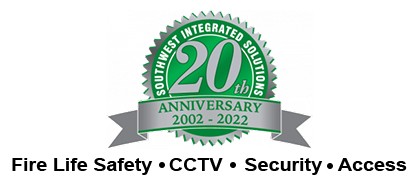How to Prepare for a Fire Safety Inspection in Arizona
Fire safety inspection in Arizona are essential for protecting your property, ensuring code compliance, and preventing costly hazards before they escalate. Whether you’re a homeowner in Phoenix or a business owner in Tucson, preparing for a fire safety inspection requires understanding state regulations, local fire codes, and best practices to keep your space safe.
In this guide, we break down everything you need to know to confidently prepare for a fire safety inspection in Arizona.
Why Fire Safety Inspections Matter in Arizona
Arizona’s dry climate, high temperatures, and seasonal wildfire risks make fire safety especially important. Local fire departments and inspectors enforce regulations to minimize fire hazards in both residential and commercial properties.
A successful fire safety inspection:
- Ensures compliance with the Arizona Fire Code (AFC)
- Reduces liability for property owners
- Protects lives and assets
- Helps avoid expensive fines and required follow-up inspections
Common Fire Safety Standards in Arizona
Although requirements can vary slightly by city or county, most Arizona inspections focus on these key areas:
Proper functioning of smoke alarms and fire alarms
You test smoke and fire alarms regularly to ensure they activate correctly during an emergency. They should be placed in the required locations and maintained in accordance with manufacturer and local fire code guidelines. Functional alarms provide early warning and significantly reduce the risk of injury or property damage.
Accessible and fully charged fire extinguishers
Fire extinguishers should always remain visible, easily accessible, and unobstructed. You keep extinguishers fully charged and inspect them according to annual or monthly requirements. A ready-to-use extinguisher stops small fires from turning into major incidents.
Clear, unobstructed exits and pathways
All hallways, doorways, and exit routes must remain free of clutter or blockages. Clear pathways ensure quick evacuation during emergencies. Obstructed exits can delay escape and increase the risk of injury.
Safe storage of flammable materials
You store flammable liquids and chemicals in approved containers and keep them away from heat sources. You place them in designated fire-safety storage areas. Proper storage reduces the likelihood of accidental ignition and hazardous conditions.
Compliance with electrical safety codes
Electrical systems must meet local safety standards and be free from damaged wiring or overloaded circuits. Regular inspections help identify potential fire hazards before they escalate. Following electrical codes protects both property and occupants from preventable electrical fires.
Working sprinkler systems, if applicable
You test sprinkler systems on a routine schedule to ensure water flow and operation. They play a critical role in suppressing fires before they spread. A well-maintained sprinkler system can significantly minimize damage during a fire emergency.
How to Prepare Your Arizona Home for a Fire Safety Inspection
1. Test All Smoke and Carbon Monoxide Alarms
Replace batteries and ensure each alarm meets Arizona’s requirements, which typically include placement in hallways, bedrooms, and main living areas.
2. Clear Escape Routes
Make sure windows open easily, and pathways to exterior doors remain unobstructed.
3. Inspect Electrical Systems
Look for overloaded outlets, frayed cords, and improper use of extension cords—common causes of residential fires.
4. Store Flammable Items Safely
Keep gasoline, propane, cleaning chemicals, and other combustibles in approved containers away from heat sources.
5. Maintain Fire Extinguishers
Even residential properties benefit from having a properly rated and easy-to-access extinguisher.
How to Prepare Your Arizona Business for a Fire Inspection
1. Verify Fire Extinguishers Are Up to Code
Extinguishers must be:
- Accessible
- Clearly labeled
- Inspected yearly by a certified technician
- The correct type for your business
2. Review Emergency Lighting and Exit Signs
Arizona businesses are required to have:
- Illuminated exit signs
- Emergency lighting systems that activate during power loss
3. Maintain Fire Alarm and Sprinkler Systems
Make sure your monitoring company and fire protection provider have up-to-date test certificates.
4. Keep Exits Clear and Marked
All emergency exits must remain unobstructed—no boxes, furniture, or storage blocking them.
5. Train Employees on Fire Procedures
Businesses in Arizona provide fire evacuation procedures and ensure team members know where to find extinguishers and exits.
Documents and Records to Prepare
Before the inspector arrives, gather these documents:
- Fire alarm and sprinkler test reports
- Fire extinguisher inspection tags
- Emergency evacuation plans
- Maintenance records for alarms, lighting, and suppression systems
Having everything organized helps the inspection go smoother and faster.
What to Expect During the Fire Safety Inspection
An Arizona fire inspector will typically:
- Review your documentation
- Walk through the property, checking key safety features
- Identify hazards or violations
- Provide a written report with necessary corrections
If corrections are required, most jurisdictions allow a reasonable time frame before conducting a follow-up inspection.
Final Tips for Passing Your Fire Safety Inspection
- Perform a self-inspection a few days beforehand
- Fix minor issues immediately
- Keep a maintenance routine rather than a last-minute
- Ask questions—inspectors can be a helpful resource
Conclusion
Preparing for a fire safety inspection in Arizona doesn’t have to be stressful. With the right steps, you can ensure your home or business is compliant, safe, and ready for any emergency. Prioritizing fire prevention now can save lives, reduce risks, and protect your property year-round.
Ready to make sure your property is fully protected?
Protect your property by scheduling a fire safety inspection with Southwest Integrated Solutions. Our certified technicians ensure your home or business meets all Arizona fire code requirements. Contact us today to get started.






















